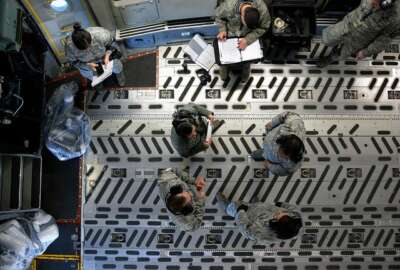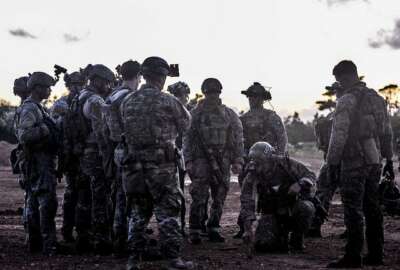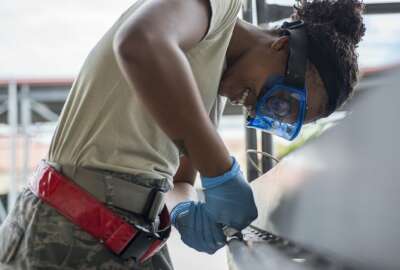
Personnel tweaks change squadron officer training, may help medically separated airmen
The Air Force is changing some of its policies to bring squadrons into the 21st century. Meanwhile, the service is reviewing medically separated airmen's disabi...
The Air Force is making a series of personnel tweaks to better leadership within its ranks and to benefit medically separated airmen.
The service announced last week it redesigned its Air University Squadron Officer School program to “better align with the needs of the Air Force.”
The new course starts at the end of July, and will expand from five weeks to six and a half weeks. Air Force captains are required to take the course and about 4,200 go through it annually. The classes will decrease from seven to six a year, but each class will hold 700 students instead of 600.
The redesign is part of Air Force Chief of Staff Gen. David Goldfein’s goal to revitalize squadrons, which he announced last fall.
A July 6 release from the Air Force stated the curriculum favorably impacts squadrons by educating captains on becoming “bold and courageous leaders ready to overcome today’s and tomorrow’s challenges.”
The course is designed around four primary areas: leadership, building highly effective teams, logical and ethical reasoning and multi-domain joint warfare.
“SOS is primary developmental education for our captains, and we felt it was crucial to invest the time required to develop the competencies our students need for the operational Air Force,” said Maj. Dwayne Clark, the SOC dean of academic affairs. “At this point in their careers, our students are tactical experts and understand what they do day-to-day. This in-residence program is an opportunity to ensure captains think deeply and critically about why they do it. As such, we will engage them in divergent, convergent and reflective thinking habits, which are cornerstones for leadership growth.”
Goldfein announced the squadron revitalization task force along with two others to fundamentally change the Air Force.
“When we talk about revitalizing squadrons, we aren’t talking about taking money and manpower and throwing them at this issue. Quite frankly, we don’t have it. This is to step back and ask ourselves the fundamental question, ‘What does a 21st-century squadron need to look like?’ I think it looks different. I think there may be a civilian/military mix to it … we have one Air Force with three components that are joined at the hip and we ought to look at that at the squadron level and see if there is a different mix we ought to look at,” Goldfein said.
The Squad Revitalization Task Force has already conducted 12 base visits and interviewed more than 1,000 airmen.
It also set up a crowdsourcing site to get views from airmen on how to improve squadrons.
The task force is supposed to last four years in total.
More education
The Air Force is getting a little friendlier for eggheads.
Leadership recently approved funding for Ph.D. candidates through the Civilian Tuition Assistant Program.
Tuition assistance covers 75 percent of tuition for one course per semester, capping at $250 per semester hour.
“Civilian tuition assistance exists to offset costs for courses that contribute to occupational and institutional competencies, special interest needs and readiness by supporting the current and future needs of the Air Force,” said Ervin Long, employee development specialist at the Air Force Personnel Center.
Under former Defense Secretary Ash Carter, the Air Force and other military branches made a push to make the military friendlier to smart, innovative and civilian-educated service members.
Ratings reviews
For those who are former airmen, the Air Force is making a few changes that may affect disability pay.
The service is opening up disability ratings for review for airmen who were medically separated between September 2001 and December 2009.
“The intent is to ensure fairness and accuracy, as well as consistency across the services,” said Troy McIntosh, Physical Disability Board of Review president at Air Force headquarters, said in a June 26 release.
The process is open to airmen who were separated with a combined disability rating of 20 percent or less and received separation pay as opposed to medical retirement.
The Air Force will not allow applicants to appear before the board in person. Applicants can include statements, briefs, medical records and other information, however.
Copyright © 2024 Federal News Network. All rights reserved. This website is not intended for users located within the European Economic Area.
Scott Maucione is a defense reporter for Federal News Network and reports on human capital, workforce and the Defense Department at-large.
Follow @smaucioneWFED





